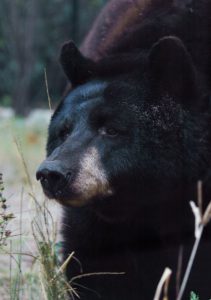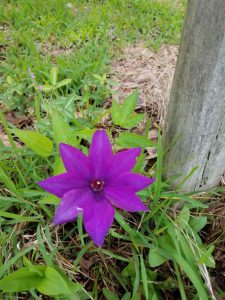“That which we call a Rosa x odorata by any other name would smell just as sweet.” I agree that just does not work the same as Shakespeare’s original line from Romeo and Juliet. Poetry is artistic and is meant to evoke ideas. For pest control we need to be a little more specific. Today we are going to discuss “What’s in a name” and look at proper pest ID. We will let the bard worry about flowery language. We will work to properly identify the flower, or better yet the pest of the flowers.
The Danger in Common
It’s not just pesky poets that use common names for pests, weeds, plants, bugs. Everyone from pesticide applicators to the public, and even University professors, will use common names for species. Common names can even be useful for people to remember the name for something. Most people would have to do an internet search if I told you there was an Ursus americanus in the Stenotaphrum secundatum. What I really said was there is a black bear in the St. Augustine grass. Common names can be ok, and even helpful.
Common names, however, can vary widely from country to country, region to region, and even person to person. Perhaps my favorite example comes from a friend in Louisiana where they will talk about “gazon grass”. This roughly translates to grass grass. For those not from there, it means little. Some groups have tried to correct this by having official common names, like the Entomological Society of America. This certainly helps and allows a way to use the more memorable common name and have it connected to a single species. However, this still implies people will only use the official common name. Many other scientific groups don’t even go that far, they might list multiple common names for a species. The simplest solution to all of this is to ALWAYS use the scientific name, even when using a common name as well.
Examples
Scientific names follow very strict rules, like most of science. These names can be hard to pronounce, and that’s because they are all in Latin, a language no one speaks anymore. This puts EVERYONE on the same footing, we all struggle to speak a language that isn’t spoken anymore. Dr. Faith Oi gifted me that line about “a dead language can’t change on us” while in training this week (check out PMU by the way, amazing program). However, because this is a universal language it means a scientific name means the same thing in Gainesville Florida that it would mean in Munich Germany or even the most remote island in the Pacific Ocean. In this case a Rosa x odorata has no other name!


We can all speak the same language, and thus communicate the same information. As you can see in the earlier examples scientific names are italicized and come in two parts. The capitalized portion is the genus and is followed by the species. Using the bear from earlier the genus Ursus has many species. So Ursus americanus is a black bear, but Ursus maritimus is the polar bear. Same genus, very different habitat and behavior. The problem in using “black bear” is there are multiple species that have that name. In America it is likely Ursus americanus but if I used that term in Asia, they would think I was talking about Ursus thibetanus.
Why This Matters
Gotta stick with the Shakespeare theme, “all that is past is prologue”. This entire blog was inspired by discussing common names while having lunch here at work with a bunch of other scientists. It was a spirited conversation and so rooted in nerdiness that it just had to be shared. Although this can seem like a silly discussion and semantics, it really is important when we discuss pest control. The only way to properly build a management plan, find the proper information, and share that with others is to be 100% sure all parties are discussing the same species. If I got a call to come and control “midges” at somebody’s house, but they did not specify what type of midge, my management efforts might be completely wasted. A scientific name is the ONLY way to be sure everyone is talking about the same species, and as such best prepared to develop a management plan. As a reminder, management plans shouldn’t be a random thing, the best plans incorporate Integrated Pest Management
Proper pest ID is so important because it helps guide what management, if any, would be best. This will help with proper pesticide choice, if using chemical control options. Moreover, taking the time to learn scientific names means being deliberate in learning more about your target in the first place. This can help with timing of control, frequency of control, and proper management methods and expectations. Selectively targeting a particular pest with a detailed plan and understanding is always better than just “spraying the weeds”. The best way to know one’s enemy is to study them.
Tools for ID
To better identify your pest using a taxonomic key can be helpful. These guides will identify the pest in question by asking a series of questions that help ID the pest by physical features. However, some of these keys can be very complex and challenging to use, sometimes finding the right expert is the faster approach. Contacting your local county extension office might get you help or an ID even faster (Find Your Local Extension Office). Professional societies such as the Weed Science Society of America (WSSA) and The Entomological Society of America (ESA) have great resources to help ID common pests.
Conclusions
Hopefully I have convinced you by now that when we are discussing pest control, where proper ID truly matters, the use of scientific names is important. We can all appreciate the beauty of the line “What’s in a name? That which we call a rose by any other name would smell as sweet” by William Shakespeare. It works great when discussing star crossed lovers, but we know we need more. To ensure we are all discussing the same species and working towards the best management plans it really is best to use scientific names. What’s in a name, the answer should be a genus and species to ensure proper pest ID.
Click To Subscribe
Resources
Find County Extension Office: https://sfyl.ifas.ufl.edu/find-your-local-office/
WSSA Weed ID: https://wssa.net/wssa/weed/weed-identification/
ESA Main Page: https://entsoc.org/
IPM Blog: https://blogs.ifas.ufl.edu/pesticideinformation/2021/08/11/ipm-the-struggle-in-defining-a-strategy/
Pest Management University: https://pestmanagementuniversity.org/
 2
2

